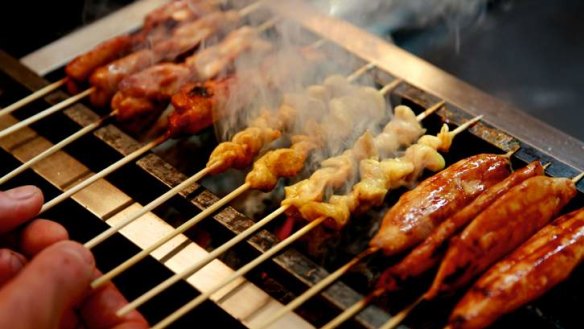What is a broiler?

What is a broiler? O. Roby
If you were in America you would be referring to a grill. In Australia the term refers to a chook. A chook raised for meat. On the other
hand an hen clapped out from laying is called a boiler. Don’t confuse the two. Funnily enough boilers make very good rich golden and
flavoursome stock. Some butchers still stock boilers and keep them in the freezer.*
What makes okra so slimy? F. Mitchell
We don't have much stomach for slippery food in the West. We're more of a crunchy culture. We like the snap of fresh celery, the smashing of a good bread crust between our teeth and the audible ker-unch of apples, chips and crisp-skinned meats.
Cultures that eat a lot of wild foraged greens grow up with an appreciation of the mucilaginous texture in their soups and stews garnered from the juice exuded from fresh greens. Mexicans throw handfuls of verdolaga (purslane) into their braises to thicken the sauce. Egyptians have a lovely chicken soup thickened with mallow leaves.
Okra is native to the west coast of Africa and travelled around the world with locals who were enslaved. Okra contains long-chain carbohydrate molecules that, when heated, thicken dishes such as Louisiana's gumbo, resulting in a slippery mouthfeel. To prepare okra, trim the stems and peel away any dark lines on the skin with a potato peeler.
Did Marco Polo discover pasta, and if not, who did? D. Evans
That's a bit like asking, ''Did Captain Cook discover Australia?'' I think there were a few people in Australia before Cook. He just had good PR. Back in the 13th century, Marco Polo was the Leyland Brothers of his day, hitting the road and returning with stories. He did report that the Chinese were eating noodles but pasta wasn't a novelty to his compatriots as they were already eating boiled wheat pastry, mostly as gnocchi-like dumplings. Noodles were flat, cut from hand-rolled sheets of dough.
Late 13th-century Italian poet Jacopone da Todi wrote: ''He who looks at the magnitude is often mistaken: a grain of pepper conquers lasagne with its strength.''
The technique of extruding dough through holes cut into a brass plate, introduced in the 1700s, saw the development of tubular styles of pasta we know today, but this ''industrial'' pasta wasn't popular until the 1930s.
It is interesting to note that the old-fashioned brass plates originally used to make pasta offer more friction than the modern Teflon ones and create a rougher surface to which the pasta sauce sticks better.
Why do TV chefs/cooks have no idea what the size difference is between a dessertspoon and a tablespoon? M. Ray
I remember asking a Spanish housewife how much sherry she used to make a certain type of pastry. She said a glass. I asked what sort of glass. She said a wine glass. I looked at the quantity of flour in the recipe and worked out that a wine glass full of sherry would have made a slurry, not biscuit dough. I asked to see her glass and she revealed a glass thimble, a souvenir from a trip made when she was first married. She explained she wasn't much of a drinker and would ''sip'' while the rest of the family ''drank''.
As baking is all about the ratio of dry to wet, and sugar to fat, it was important to work out how much liquid her little glass contained: just 20ml. When it comes to less arcane forms of cooking, such as stews, roasts, marinades and salads, sometimes a splash, a pinch, a handful or a dessertspoon of a certain ingredient will do, and the difference between a dessertspoon (10ml) and a tablespoon (20ml) is not something to get hung up about.
But if the TV chef was an American or Brit and they held up a tablespoon, it would appear one-third smaller than an Australian tablespoon. Australia is perhaps the only place on earth that has 20ml tablespoons as standard. In the rest of the world they are 15ml.
You must also remember that people are not put on television for their common sense.
* Broiler response has been corrected from an earlier version where broiler was described as a chook clapped-out from laying eggs.
Send your queries to brainfood@richardcornish.com.au
The best recipes from Australia's leading chefs straight to your inbox.
Sign up- More:
- Brain food
